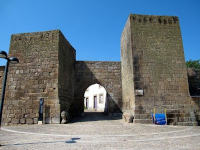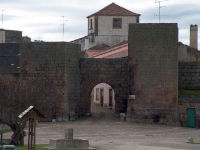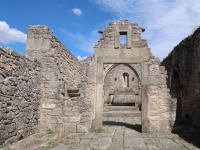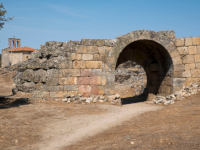Background
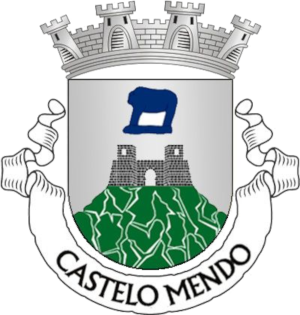
The origins of Castelo Mendo are still much debated. Apparently, its foundation took place in the 13th century, when the population of the interior Beira region reached a dimension reasonable and in which the military consolidation of the border determined the construction of fortresses secondary support and defense of the territory. It was in this context that the first charter of the town, granted by Sancho II of Portugal on March 15, 1229, at a time when the areas of Riba-Côa were still a point of war between the two kingdoms.
We are unaware of the progress of the works and the configuration of the military project outlined at the time. In the In fact, what has survived to this day from the medieval fortress of Castelo Mendo dates back to the reign of D. Dinis, a fact that led many authors to consider this monarch to have been the true founder of the village. On December 16, 1281, the farmer king confirmed the charter of Sancho II of Portugal. Two days then, he established a fair. This data is linked to the constructive military campaign here carried out at the end of the 13th century, an undertaking that gave the town its generic configuration which still presents itself today.
The medieval castle

It is believed that the castle's original construction dates back to the turn of the 12th to the 13th century, under the reign of Sancho I of Portugal (1185-1211). The town received a Charter, issued by Sancho II of Portugal (1223-1248) in Vila do Touro, on March 15, 1229. This document is particularly interesting for stipulating the first official fair in the kingdom, to be held for eight days, three times a year: at Easter, Saint John's Day and Saint Michael's Day. In it are found the castle and its mayor at the time, Mendo Mendes, are mentioned. The construction of the first walled belt to defend the village.
Part of the territory of Ribacôa, disputed with the kingdom of León by Dinis of Portugal (1279-1325), its definitive possession for Portugal was assured by the Treaty of Alcanices (1297). The sovereign, from then on, sought to consolidate its borders, rebuilding the Castle of Alfaiates, the Castle of Almeida, the Good Castle, the Better Castle, the Mendo Castle, Rodrigo Castle, Pinhel Castle, Sabugal Castle and Vilar Maior Castle.
The construction of the second walled belt, as well as the Keep, dates from this period. with the resources that are assured by the confirmation, by this sovereign, of the town's charter, on the 16th December 1281, which two days later instituted a Free Fair, to be held in Devessa.
With peace, dependent on its scarce economic and population resources, the population entered into decadence. At the beginning of the reign of John I of Portugal (1385-1433), the town was transformed into a hunting ground homized.
Under the reign of Manuel I of Portugal (1495-1521) The decline of the town and its castle is evident in the illustration that Duarte de Armas left us in his Book of Fortresses (c. 1509).
From the 19th century to the present day

At the time of the Peninsular War, a garrison of nineteen men in the village resisted the troops Napoleonic under the command of André Massena.
Castelo Mendo ceased to be the seat of the Municipality in 1855, and from then on its decadence. In the 20th century, the complex was declared a National Monument by Decree published on 2 January 1946. From then on, the General Directorate of National Buildings and Monuments (DGEMN) carried out consolidation and restoration interventions, reconstructing several sections of walls, gates and towers that, according to scholars, would have distorted the original appearance of the set.
The building of the former Town Hall and Prison was refurbished as a museum space, displaying to visitors pieces from the Roman period.
Architecture

Built at an elevation of 762 meters above sea level, in Gothic style, It has an irregular oval-shaped plan, comprising two distinct cores:
- the citadel within the inner defensive perimeter, to the east. Here the Tower of Menagem attached to a section of the wall. In this fence, to the West, the main door is torn. Node inside, the cistern, with a quadrangular plan, opens and the Church of Santa Maria do Castle and the old Town Hall.
- the village fence, with an irregular plan, dating mostly from the Dionysian period, originally reinforced by several towers. Here three doors were torn (Sun Gate, Porta dos Berrões), associated with three Turrets, the main buildings being the Church of Saint Peter and the Church of Saint Vincent.
The connection between the two spaces is made through the Porta da Vila, in a broken arch, of dimensions monumental, framed by two square-shaped turrets. Here is the coat of arms inscribed of Denis of Portugal.
The Porta da Vila is guarded by two pre-Roman granite zoomorphs (4th century BC), representing pigs or wild boars, which had their snouts cut off "because they were frightened by the beasts that repaired them."
Events of the time
1270 - End of the Eighth crusade.
- Donation of the Lordship of Portalegre, Marvão, Arronches and Vide
to Afonso de Portugal,
brother of D.
Denis.
1273 - Foundation of the city of Montalegre, in Portugal.
1275 - The Venetian Marco Polo
arrives in Beijing, China.
1278 - D. Afonso III hands over the government of
the kingdom to D. Denis.
- Independence of Andorra.
1279 - D. Dinis becomes king of Portugal.
- The first references to the Azores archipelago originate from sea
voyages made by Europeans in the 14th century,
namely from Portugal during the reigns of D. Dinis (1279-1325) and his successor,
Afonso IV.
- In Portugal, King D. Dinis begins the process of requalifying the
walls of Braga. The works will continue until around 1325.
1281 - Beginning of the armed struggle between D.
Dinis and the
infante D. Afonso, his brother.
- D. Dinis offered the town of Monforte to his daughter
D. Isabel as a dowry at
her wedding.
1282 - June 26 - Wedding, in Trancoso, of D. Dinis, King of Portugal and
Isabel of Aragon.
- Agreement between D. Dinis and his brother Afonso, in Badajoz.
Afonso promises to destroy the walls he had built, be knighted and become his vassal.
1290 - Em Portugal, D.
Dinis
atribuiu Foral a Ourique.
1295 - Jacques de Molay assumes the position of Grand
Master of the Order of the Knights Templar.
1297 - September 12 - The Treaty of
Alcanises defines the
border between Portugal and Castile.
- September 11 - The Scots, commanded by William
Wallace
and Andrew
Moray, defeat the
English
under Edward I of England, in the
Stirling Bridge Rating.
- A Portuguese water dog is first described in a monk's report of a
drowning sailor, who had been pulled from the sea by a puppy.
